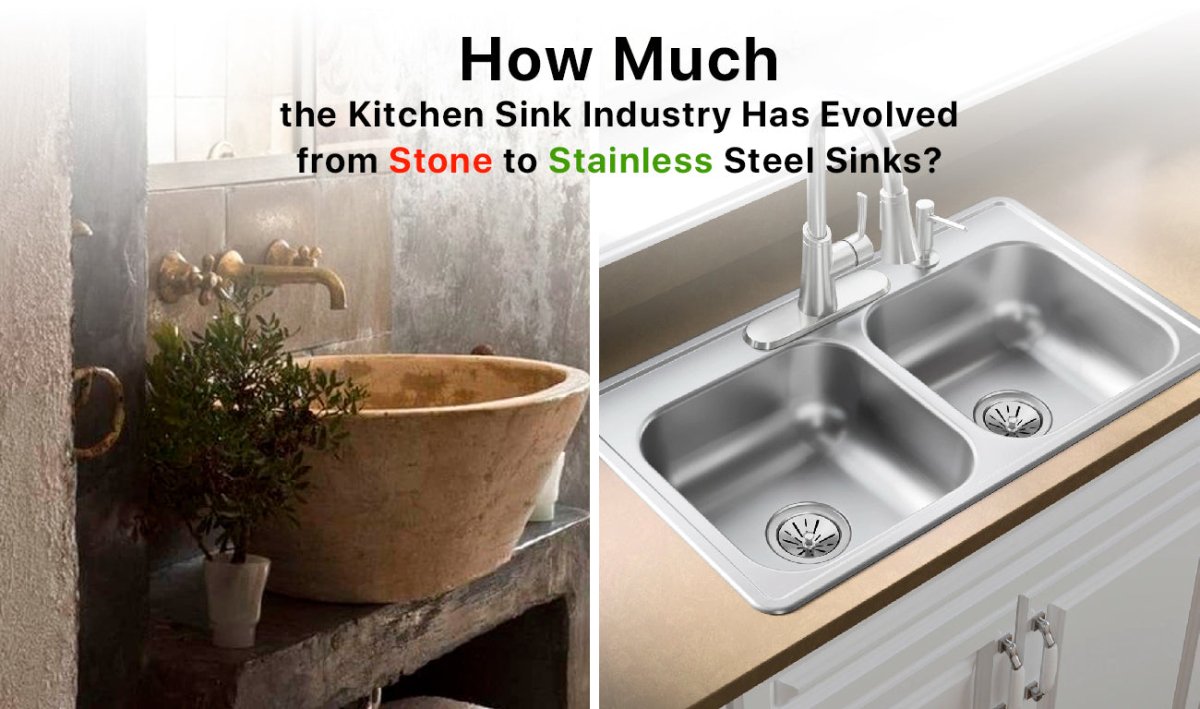The kitchen sink has long been a staple fixture in every home's kitchen. It is where we wash our dishes, prepare our meals, and sometimes even bathe our pets. Over the years, the kitchen sink industry has evolved significantly, from the early days of stone sinks to the sleek and modern stainless steel sinks of today. In this blog, we'll take a look at the history of kitchen sinks and how they've evolved to become the durable and versatile fixtures we know and love today.
The Early Days of Stone Sinks

The first kitchen sinks were made of stone and were primarily used for washing dishes and cleaning vegetables. They were typically made of granite, marble, or soapstone, which were heavy and difficult to shape. These early sinks were also prone to chipping and cracking, which made them difficult to maintain.
The Rise of Porcelain Sinks

In the early 1900s, porcelain sinks began to gain popularity. They were lighter and easier to manufacture than stone sinks, and their smooth, non-porous surfaces made them easy to clean. A porcelain kitchen sink is available in a variety of colors, which allows homeowners to match them to their kitchen decor. However, porcelain sinks were still prone to chipping and staining, which limited their lifespan.
The Introduction of Stainless Steel Sinks

In the 1930s, stainless steel kitchen sink was introduced, and it quickly gained popularity due to its durability, affordability, and sleek modern design. The stainless steel kitchen sink is made from an alloy of iron and chromium, which makes them highly resistant to rust, corrosion, and staining. They are also easy to clean and maintain, and their neutral color complements any kitchen decor.
The Evolution of Stainless Steel Sinks

Since their introduction, stainless steel sinks have continued to evolve, with manufacturers introducing new features and designs to improve their functionality and aesthetics. Mounting options, design, color, and sink bowl are some of the features you can see in modern kitchen sinks. Here are some of the most significant innovations in the stainless steel sink industry:
- Soundproofing: Many modern stainless steel kitchen sink is soundproofed to reduce noise when water is running or dishes are being washed. This is achieved by applying a layer of insulation to the bottom and sides of the sink.
- Multiple Bowls: Many modern stainless steel sinks come with two or more sink bowl options, which allow homeowners to use one side for washing dishes and the other for rinsing or soaking.
- Undermount Design: Undermount stainless steel sinks are designed to be mounted underneath the countertop, which creates a seamless, sleek look and makes cleaning easier.
- Integrated Drainboards: Some stainless steel sinks come with built-in drainboards, eliminating the need for a separate drying rack and providing a convenient place to dry dishes.
- Zero Radius Sinks: Zero radius sinks are a modern design that features sharp, straight edges instead of the rounded corners found on traditional sinks. As a result, they provide a sleek, contemporary look and are easy to clean.
- Apron Front Sinks: Apron front sinks, also known as farmhouse sinks, are a popular design that features a large, deep basin and a front panel that extends past the edge of the countertop. They provide a rustic, farmhouse look and are often made of stainless steel or other durable materials. Of course, you can get sink bowl variations like single bowls or double bowl sinks.
Conclusion
From the early days of stone sinks to the modern, sleek designs of stainless steel sinks, the kitchen sink industry has come a long way. Today's stainless steel sinks are durable, versatile, and available in a wide variety of designs to suit any kitchen decor. If you're in the market for a new kitchen sink, be sure to consider the many options available to you and choose a sink that will meet your needs and complement your kitchen's style.





